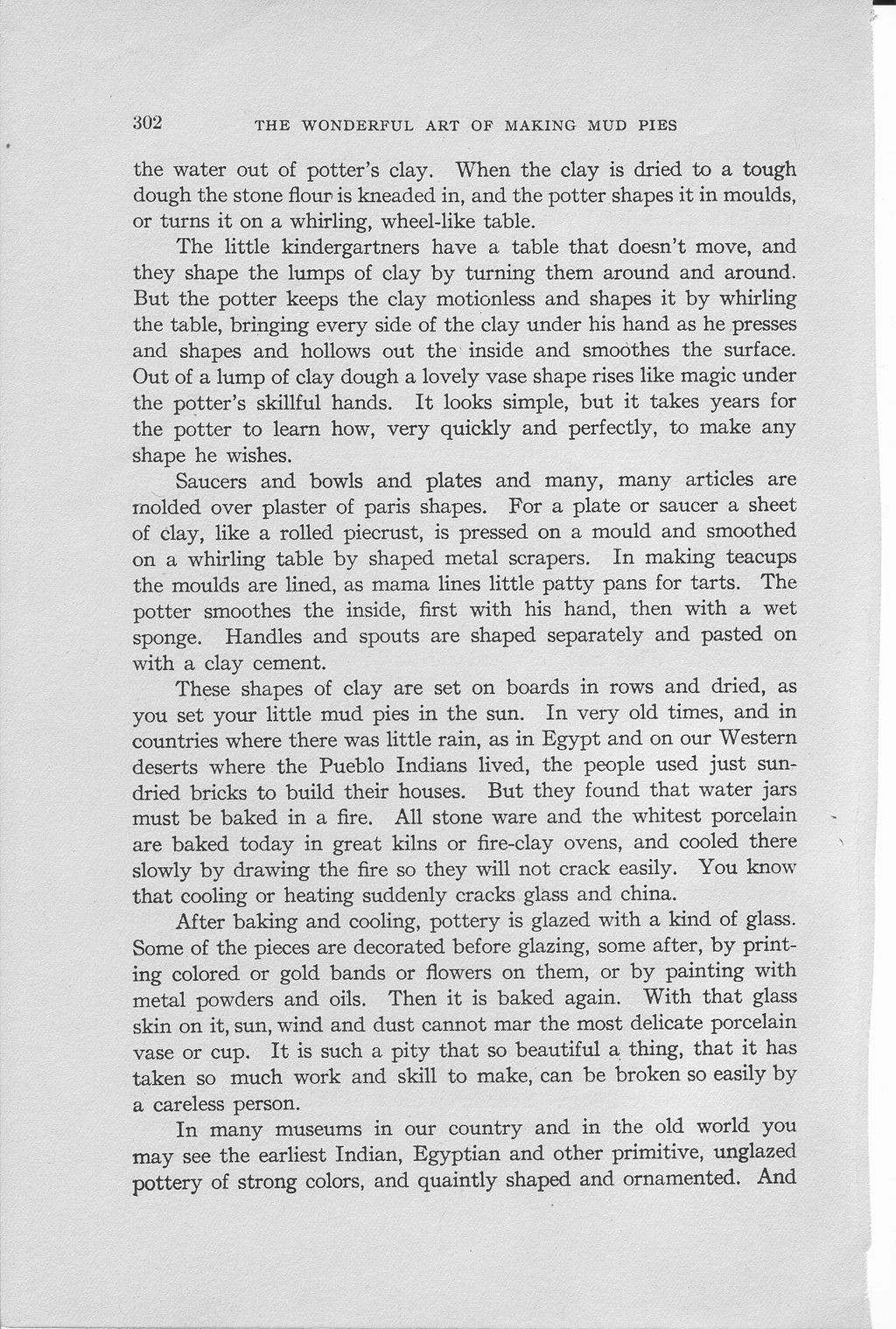the water out of potter’s clay. When the clay is dried to a tough dough the stone flour is kneaded in, and the potter shapes it in moulds, or turns it on a whirling, wheel-like table.
The little kindergartners have a table that doesn’t move, and they shape the lumps of clay by turning them around and around. But the potter keeps the clay motionless and shapes it by whirling the table, bringing every side of the clay under his hand as he presses and shapes and hollows out the inside and smoothes the surface. Out of a lump of clay dough a lovely vase shape rises like magic under the potter’s skillful hands. It looks simple, but it takes years for the potter to learn how, very quickly and perfectly, to make any shape he wishes.
Saucers and bowls and plates and many, many articles are molded over plaster of paris shapes. For a plate or saucer a sheet of clay, like a rolled piecrust, is pressed on a mould and smoothed on a whirling table by shaped metal scrapers. In making teacups the moulds are lined, as mama lines little patty pans for tarts. The potter smoothes the inside, first with his hand, then with a wet sponge. Handles and spouts are shaped separately and pasted on with a clay cement.
These shapes of clay are set on boards in rows and dried, as you set your little mud pies in the sun. In very old times, and in countries where there was little rain, as in Egypt and on our Western deserts where the Pueblo Indians lived, the people used just sun- dried bricks to build their houses. But they found that water jars must be baked in a fire. All stone ware and the whitest porcelain are baked today in great kilns or fire-clay ovens, and cooled there slowly by drawing the fire so they will not crack easily. You know that cooling or heating suddenly cracks glass and china.
After baking and cooling, pottery is glazed with a kind of glass. Some of the pieces are decorated before glazing, some after, by printing colored or gold bands or flowers on them, or by painting with metal powders and oils. Then it is baked again. With that glass skin on it, sun, wind and dust cannot mar the most delicate porcelain vase or cup. It is such a pity that so beautiful a thing, that it has taken so much work and skill to make, can be broken so easily by a careless person.
In many museums in our country and in the old world you may see the earliest Indian, Egyptian and other primitive, unglazed pottery of strong colors, and quaintly shaped and ornamented. And
